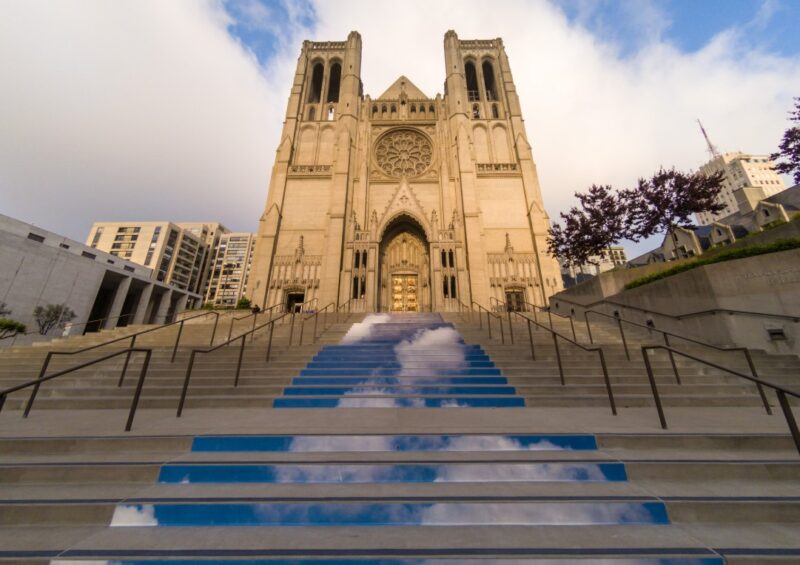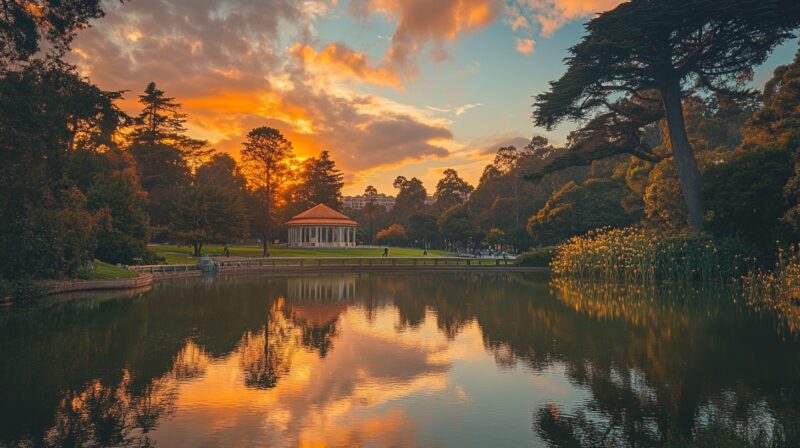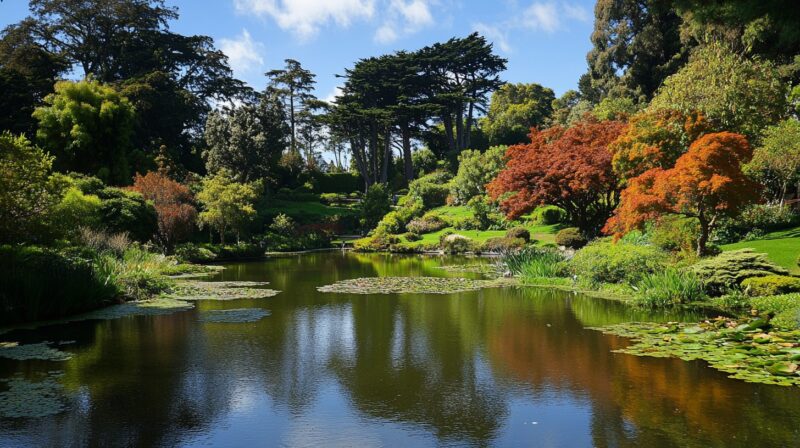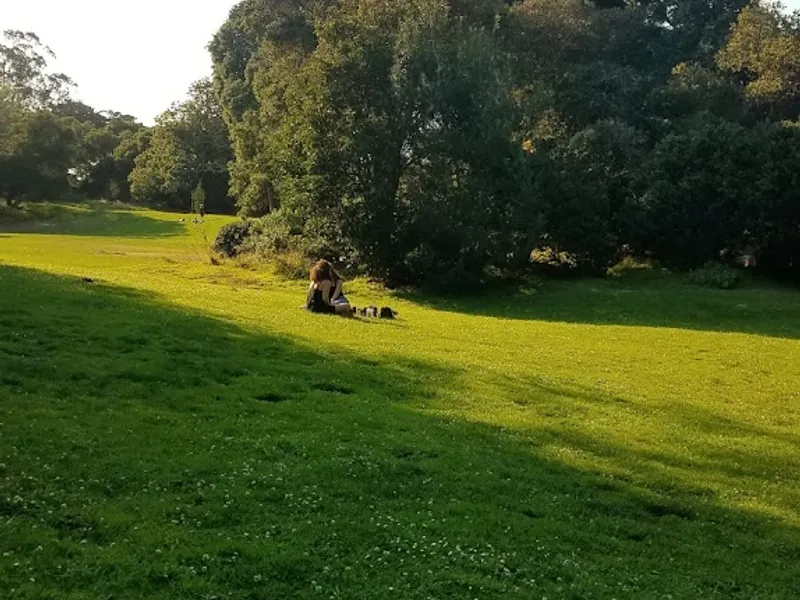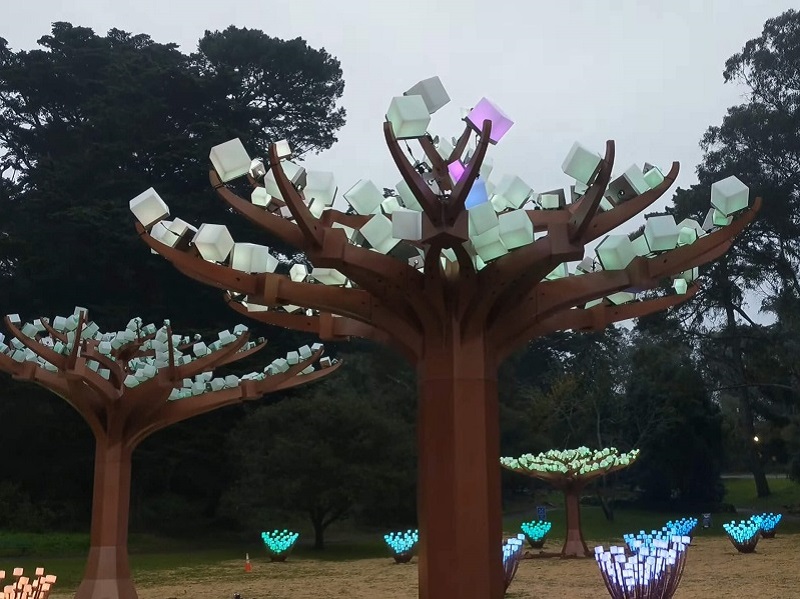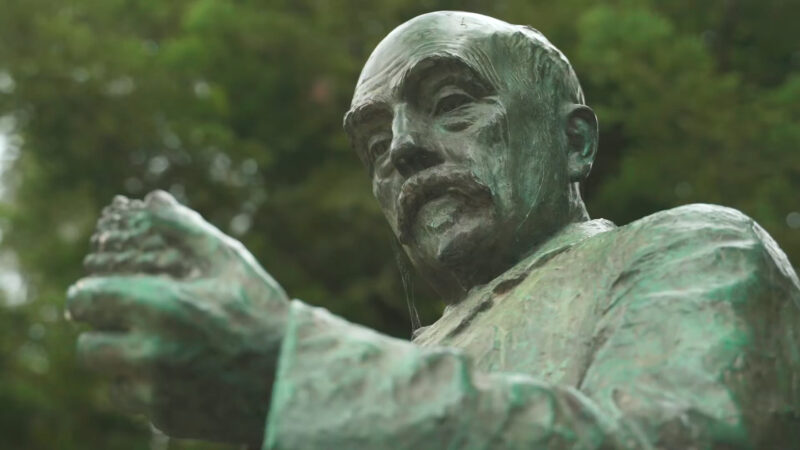
What You Should Know About Historic Sites in Golden Gate Park
- Published:
- Updated: September 19, 2024
- Published: Tourism
Golden Gate Park, San Francisco’s finest, is not only a natural wonder but also a treasure trove of historical landmarks that reflect the city’s:
- Cultural
- Architectural
- Scientific legacy
Covering over 1,000 acres, this urban oasis is often called the “Central Park of the West Coast.”
There is so much to see here, and those who visit it might miss something.
That is why we want to provide everything you need to know about the most important historic sites in Golden State Park.
The Conservatory of Flowers
View this post on Instagram
A post shared by San Francisco Conservatory of Flowers (@conservatoryofflowers)
The Conservatory of Flowers is the oldest structure in Golden Gate Park, having opened in 1879. This stunning Victorian-style greenhouse serves as a haven for botanical enthusiasts, showcasing a wide variety of exotic plants from across the globe.
Designated as a National Historic Landmark, the Conservatory is Golden Gate Park’s prominent feature. Visitors are greeted with highlights such as the iconic flower clock, while the rotating exhibits ensure that each visit provides a new experience.
The Conservatory also hosts special events, with free admission days that invite crowds to explore the fascinating flora on display.
- Orchids
- Carnivorous plants such as Venus flytraps and pitcher plants
- Aquatic plants, including giant water lilies
- Tropical ferns and palms
- Highland and lowland tropical plants
- Seasonal floral displays
Its vibrant displays and lush greenery make it a beloved spot for both locals and tourists, offering an immersive escape into the world of exotic botany.
California Academy of Sciences
The California Academy of Sciences, founded in 1853, stands as the oldest scientific institution in the Western United States.
Although the original building suffered significant damage during the 1989 Loma Prieta earthquake, the Academy was completely rebuilt and reopened in 2008 with a design that emphasizes sustainability.
Inside, the Academy offers a wide array of attractions that cater to visitors of all ages, blending science education with interactive exhibits.
Each exhibit is designed to engage visitors in the beauty and complexity of Earth’s ecosystems, underscoring the Academy’s mission to promote environmental stewardship.
Historically, the California Academy of Sciences has been at the forefront of scientific advancements, particularly in the 19th century, and it continues this legacy today.
Its research efforts span crucial topics like biodiversity, sustainability, and climate change, ensuring that the Academy remains a hub for scientific discovery.
- Living Roof: A 2.5-acre rooftop covered with native plants and designed to promote sustainability.
- Morrison Planetarium: One of the largest all-digital planetariums in the world, offering immersive astronomy shows.
- Steinhart Aquarium: Home to thousands of aquatic species, featuring unique exhibits like the Philippine Coral Reef.
- Osher Rainforest: A four-story tropical rainforest with free-flying birds, butterflies, and exotic plants.
- Kimball Natural History Museum: A collection of scientific specimens that explores the history of life on Earth.
The California Academy of Sciences invites visitors to immerse themselves in the wonders of science and nature, offering educational experiences that inspire curiosity and environmental consciousness.
de Young Museum
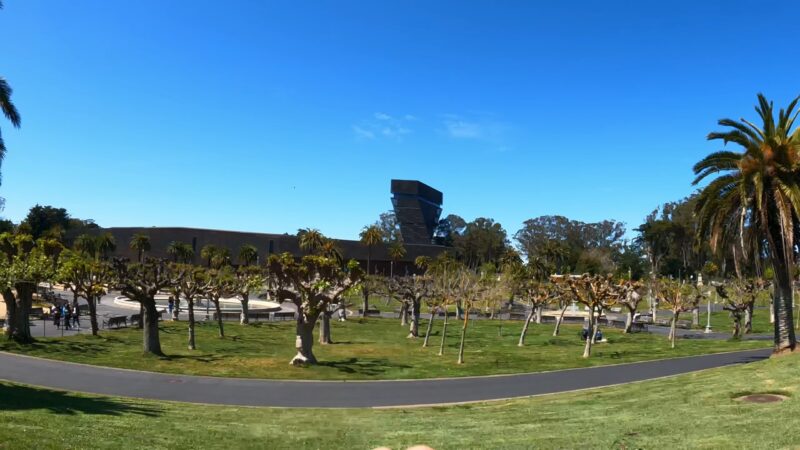
The de Young Museum, established in 1921, has long been a key part of Golden Gate Park’s cultural scene. It originally began as part of the 1894 Midwinter Exposition and has seen several updates over the years to improve both its design and collection.
Today, it’s a popular spot for art lovers, featuring an impressive range of American art, textiles, and fascinating international exhibits.
The museum’s architecture is stunning. A major redesign in 2005 by Swiss architects Herzog & de Meuron added a beautiful copper facade that complements the park’s natural surroundings.
The building also includes an observation deck that offers incredible 360-degree views of San Francisco, making it a great place to enjoy both art and the city’s skyline.
Inside the de Young, there’s something for everyone. The museum’s rotating exhibits mean there’s always something fresh to see.
- American Art Collection: Showcasing pieces from the colonial period to contemporary works.
- Textile Arts Collection: Over 13,000 textiles, including quilts, costumes, and fabrics from around the world.
- Art of the Americas: Featuring indigenous art from North, Central, and South America.
- African Art: A striking collection of masks, sculptures, and artifacts from various African cultures.
Japanese Tea Garden
Originally built for the 1894 World’s Fair, the Japanese Tea Garden is the oldest public Japanese garden in the United States, offering visitors a glimpse into traditional Japanese landscaping and culture.
This beautifully maintained garden is filled with classic elements, such as tranquil koi ponds, elegantly crafted stone lanterns, and carefully pruned greenery that reflects the essence of Japanese garden design.
Among its most famous features are the gracefully arched Moon Bridge and the striking five-tiered Treasure Tower Pagoda, both of which are highly photographed and admired by visitors.
Strolling through the garden allows guests to fully immerse themselves in an atmosphere of serenity and Japanese aesthetics.
The peaceful paths invite reflection, while the on-site Tea House provides a traditional experience, serving authentic Japanese tea and light snacks. It’s the perfect place to pause, relax, and enjoy the surrounding beauty.
Over the decades, it has remained one of the park’s most cherished attractions, offering a peaceful retreat within the bustling environment of Golden Gate Park and maintaining its connection to Japanese heritage. It is one of many gardens you will come across in Golden State Park.
Stow Lake and Strawberry Hill
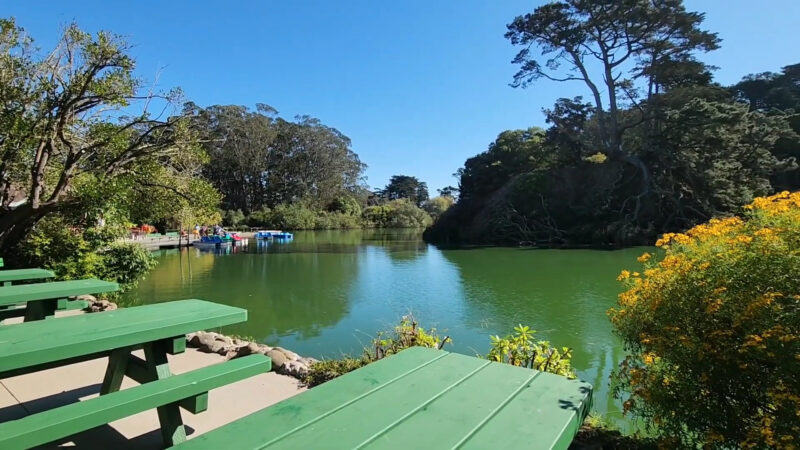
Stow Lake, the park’s first artificial lake, is open since the early 1900s and remains a favorite spot for both locals and tourists.
It surrounds Strawberry Hill, a small island that provides panoramic views of the city and the Golden Gate Bridge. The lake’s serene waters are perfect for paddle boating, and the lush surroundings offer plenty of spots for picnicking and relaxation.
Strawberry Hill was once home to a historical observatory that was destroyed in the 1906 earthquake, adding an element of historical intrigue to the site.
Today, visitors can hike up the hill to Huntington Falls, a picturesque waterfall that cascades into the lake below.
The combination of scenic views and recreational activities makes it a must-visit destination within the park.
The Dutch and Murphy Windmills
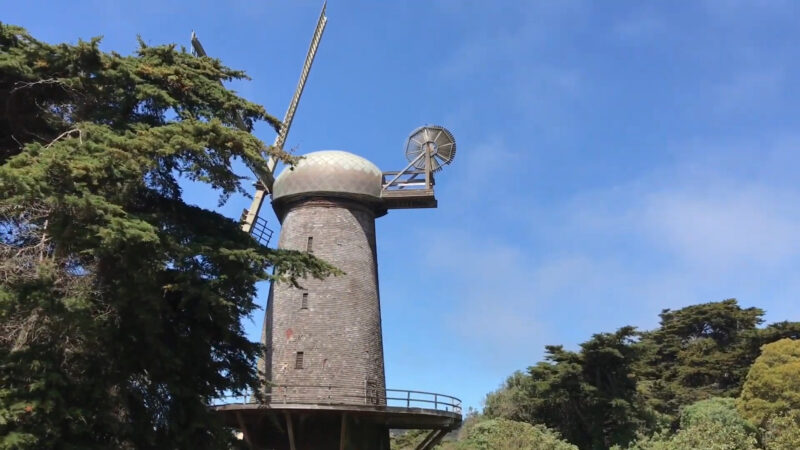
Constructed in the early 1900s, the Dutch and Murphy Windmills were originally built to pump water for Golden Gate Park’s irrigation system.
These towering structures have since become iconic landmarks within the park, symbolizing a blend of history, functionality, and beauty. The Dutch Windmill, with its adjacent tulip garden, offers a particularly striking view, especially in the spring when the tulips bloom.
Both windmills underwent significant restoration efforts and have been preserved as part of San Francisco’s cultural heritage. The Dutch Windmill’s tulip garden was a gift from Queen Wilhelmina of the Netherlands, further enhancing its historical value.
The windmills now serve as reminders of the park’s innovative past and its efforts to create a self-sustaining environment. They stand as proud monuments to both the park’s history and the city’s commitment to preserving its landmarks.
The Beach Chalet
Constructed in 1925, the Beach Chalet is a prime example of Spanish Colonial Revival architecture, offering breathtaking views of the Pacific Ocean.
While its coastal setting and striking design are impressive on their own, the Chalet is also home to historic murals created during the Great Depression.
These murals, commissioned through the Works Progress Administration (WPA), vividly capture scenes from San Francisco’s rich history and daily life, adding an artistic and cultural dimension to the building.
Today, the Beach Chalet operates as a restaurant, providing a perfect spot for visitors to enjoy a meal while taking in panoramic views of the ocean. Situated at the western edge of Golden Gate Park, it serves as a convenient stop for those exploring the park’s more secluded, coastal areas.
Its blend of history and modern-day function makes it a popular destination for both locals and tourists.
Bison Paddock

The Bison Paddock has been a key feature of Golden Gate Park since 1899, housing a herd of American bison as part of a national effort to save the species from extinction.
Located in a semi-natural habitat, the Bison Paddock allows people to observe these magnificent animals up close, providing a rare opportunity to experience a symbol of the American West.
Over the years, the herd has evolved, but it remains a popular destination, showcasing Golden Gate Park’s dedication to both preservation and history.
- Conservation Effort: Established in 1899 as part of a broader initiative to protect American bison from extinction.
- Semi-Natural Habitat: Visitors can observe the bison in a spacious, natural environment that mimics their original habitats.
- Symbol of Americana: The Bison Paddock represents a slice of vintage Americana, embodying the spirit of wildlife conservation from the early 20th century.
- Cultural and Historical Significance: A fascinating stop for history enthusiasts and animal lovers alike, offering insights into both the park’s wildlife preservation efforts and its historical roots.
The Bison Paddock continues to captivate visitors, serving as a reminder of the park’s enduring mission to protect wildlife while celebrating the park’s rich history.
Spreckels Lake
Opened in 1904, Spreckels Lake has been a beloved destination for model boating enthusiasts for over a century. Named after Claus Spreckels, a prominent sugar magnate and philanthropist, the lake has become an integral part of Golden Gate Park’s recreational offerings, providing a serene setting for boating and relaxation.
Throughout the year, Spreckels Lake hosts a variety of model boating events, drawing both amateurs and seasoned enthusiasts. These events have helped establish the lake as a central hub for model boating in San Francisco. Visitors can often spot intricately crafted boats gliding across the water, adding a unique charm to the peaceful atmosphere.
For those seeking a quiet retreat, the lake offers a tranquil escape where they can enjoy the beauty of the water, surrounded by the park’s lush greenery.
Spreckels Lake reflects Golden Gate Park’s dedication to offering diverse recreational activities for its visitors. It is one of the best ways to spend time outdoors in San Francisco.
National AIDS Memorial Grove
Happy #HispanicHeritageMonth!
We are happy to announce that our Surviving Voices documentary about #HIV in the #Hispanic and #LatinX community is now live on our YouTube channel! https://t.co/DzwAC40wOZ pic.twitter.com/CscmUU1wQk
— National AIDS Memorial (@aids_memorial) September 15, 2024
Founded in 1996, the National AIDS Memorial Grove serves as a deeply moving tribute to the lives lost during the AIDS epidemic.
Tucked within Golden Gate Park, this peaceful sanctuary offers a quiet, reflective space where visitors can honor those who have been affected by the disease.
It is a place where memory and healing come together, providing solace to those grieving and educating future generations about the profound impact of the epidemic.
The design of the Grove fosters an atmosphere of healing and remembrance. Meandering pathways, serene benches, and thoughtfully placed inscriptions create a space for contemplation and quiet reflection.
Every element of the memorial is intended to provide comfort while commemorating the resilience and courage of those who have this sort of experience.
Over time, the Grove has become not only a significant part of Golden Gate Park but also a symbol of San Francisco’s response to one of the most devastating public health crises in modern history.
More than just a memorial, the National AIDS Memorial Grove stands as a place of:
- Unity
- Peace
- Hope
It reminds all visitors of the importance of compassion, community, and the ongoing fight against the AIDS epidemic, while offering a sacred space for reflection, remembrance, and healing.
The Bottom Line
Golden Gate Park’s historical attractions provide a chance to step back in time while also enjoying the vibrant experiences of the present.
As you wander through the park’s gardens, museums, and memorials, you are not just walking about the park for the sake of enjoying the weather and beautiful nature.
You’re also engaging with the heart of San Francisco’s history and culture.

